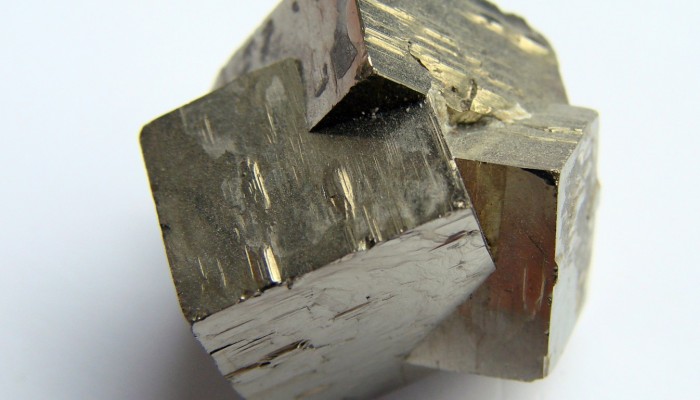
Twinning is a phenomenon in mineralogy whereby a single crystal of a mineral has two or more parts in which the crystal lattice is differently orientated.
The shared surface between two twins is called the composition or twin plane, and the orientation to either other is determined by symmetry through rotation or reflection; this relationship is described by a twin law.

Schematic showing the change in crystal structure across a twin plane. Atoms are shared by the two twins at regular intervals. Credit: Imperial College London
Twinning most commonly occurs when there is a change in conditions during the growth of the crystal, for example a variation in temperature or pressure. As minerals tend to grow in incremental layers, a small defect in the lattice order can change the orientation of the mineral growth.
A twinned mineral is especially distinctive under cross-polarised light. This is because the two parts of the lattice are orientated differently with respect to the polarised light, and (in anisotropic minerals) this will be manifest as two different colours and extinction positions; thus twinning is often a useful diagnostic tool in mineral identification.

Photomicrograph (XPL) of a clinopyroxene phenocryst showing twinning within a basalt from Grenada, Lesser Antilles. FOV = 2mm.
There are many different types of twins, and their unusual appearance is prized by collectors.
Contact twins are separated by a single shared planar surface.
Repeated contact twinning is known as polysynthetic twinning and is a common feature of feldspars.
Penetration twins often share a centre of rotational symmetry and give the appearance of passing through each other.
Some other minerals that exhibit characteristic twinning include spinel , staurolite and rutile.



